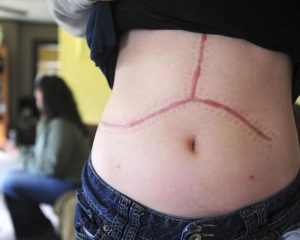Liver transplant surgery is a procedure where doctors would remove a damaged liver, and put a healthy donor-liver in its place. This becomes necessary when your child’s liver is not working as well as it should. Most children that go for liver transplant surgery cannot survive unless they get a new liver. Giving the child a new liver would be the only way to preserve his or her life. But then, is the whole process worth it? How long is the child expected to live after the liver transplant? What is the liver transplant survival rate in children? This is what we focus on in this article.
More than 12 percent of all recipients of liver transplants are children. Meanwhile, each child that gets a transplant has his or her uniqueness. That is why every transplant procedure differs from others. Doctors would not carry out a transplant until they have tried every other option. It is usually the last resort after they exhaust all other options. The donor-liver is usually from someone that had already died, but whose liver is still in good shape. Such people usually consent to donate their liver before their death. In some cases, someone who is still living can donate a part of their liver for the child. Both the donor and the recipient child would eventually have a normal-size liver within a couple of months. This is because the liver can grow its cells back to normal size.
What Does The Entire Process Look Like?
A child who needs a liver transplant must have a doctor’s reference to an accredited transplant center. A team of healthcare experts would be there to attend to your child. They are called the transplant team.
This team consists of:
- Surgeons
- Hepatologists (liver specialists)
- A liver transplant coordinator
- Psychologists
- Social workers
- Dietitians
The first thing this team will do is to examine your child. This is to ensure that he or she is healthy and fit enough for surgery. They would also confirm if your child can tolerate the drugs he or she needs after the surgery.
They may carry out a series of tests to determine your child’s health status. These include blood tests, imaging tests, and/or liver biopsy. They would try to learn all they need to know about your child, his condition, as well as health status.
This team would also talk to you and the child about what you should expect before the surgery, while it is going on, and after it. They will provide as much information as you need, as well as support. So you should ask questions if there is something you don’t seem to understand.
If this team of experts deems your child fir for a transplant, then the search for a donor begins. There is usually a long waiting list for this, and you would have to wait for your turn.
But then, if you or someone else wishes to donate a part of their liver tissue, there is no need to be on the waiting list. The same team will evaluate the living donor to see if they are fit to donate.
As soon as a match is found for your child, you will receive a call from the transplant center. So, you would take your child back there for the procedure.
The surgery is usually done under general anesthesia. This means your child would not be conscious of what is going on.
The surgeons would cut through the child’s belly, take out the damaged liver, and put the new one in its place. After this, the surgeon would stitch the cut closed. This surgical procedure could last up to 12 hours.
You cannot join them in the theatre, though. But someone would regularly give you updates about the procedure while you’re waiting outside.
Liver Transplant Survival Rate in Children
After the transplant surgery is done, they will transfer your child to the pediatric intensive-care unit (PICU). You will be allowed to be with your child here. Your child would remain in the PICU until his or her condition is fairly stable.
After a few days at the PICU, they would then transfer your child to a unit specially made for transplant recipients. Again, the team would be there to monitor and care for your child.
Your child is likely to remain in the hospital for about 3 weeks or more. During the time of stay, you will learn how you can help take care of your child’s new liver.
You must understand all the instructions the doctors are giving you. You will have to make sure your child follows them carefully.
Over time, you will have to make many follow-up visits to the hospital. The doctors would check your child to be sure everything is in order and that there is no complication.
So to the question, how long can a child live after a liver transplant? Here are the statistics from a study:
- 84% would still be alive after 5 years
- 82% would still be alive after 10 years
- 80% would still be alive after 15 years
- 79% would still be alive after 20 years
For graft surgeries, the survival rates are quite lower than these. So then, it means getting a whole new liver seems to have a better outlook than getting a graft from a living donor.
Most of the kids who receive a transplant would have no problems after their surgery. However, they may sometimes present with infections, bleeding, or some other problems.
The main problem with transplants is rejection. This occurs because the child’s body would not accept the liver as part of the body. As such, your child’s immune system would mark it as a foreign “invader” and try to attack it.
How to Take Care of Rejection
There are immune-suppressants (anti-rejection medicines) that may help control this. They would suppress the immune response and prevent rejection. But the side effect of this is that your child will be more prone to infections. So you must maintain strict hygiene around the child and prevent contact with sick people.
Your child would have to keep taking anti-rejection drugs for life. But the dosage would gradually reduce with time as your child’s body slowly adapts to the new liver.
The liver transplant survival rate in children is not bad at all. About 8 out of 10 would still be alive after 20 years. More so, almost all of these kids would go on to lead a normal, healthy life.























